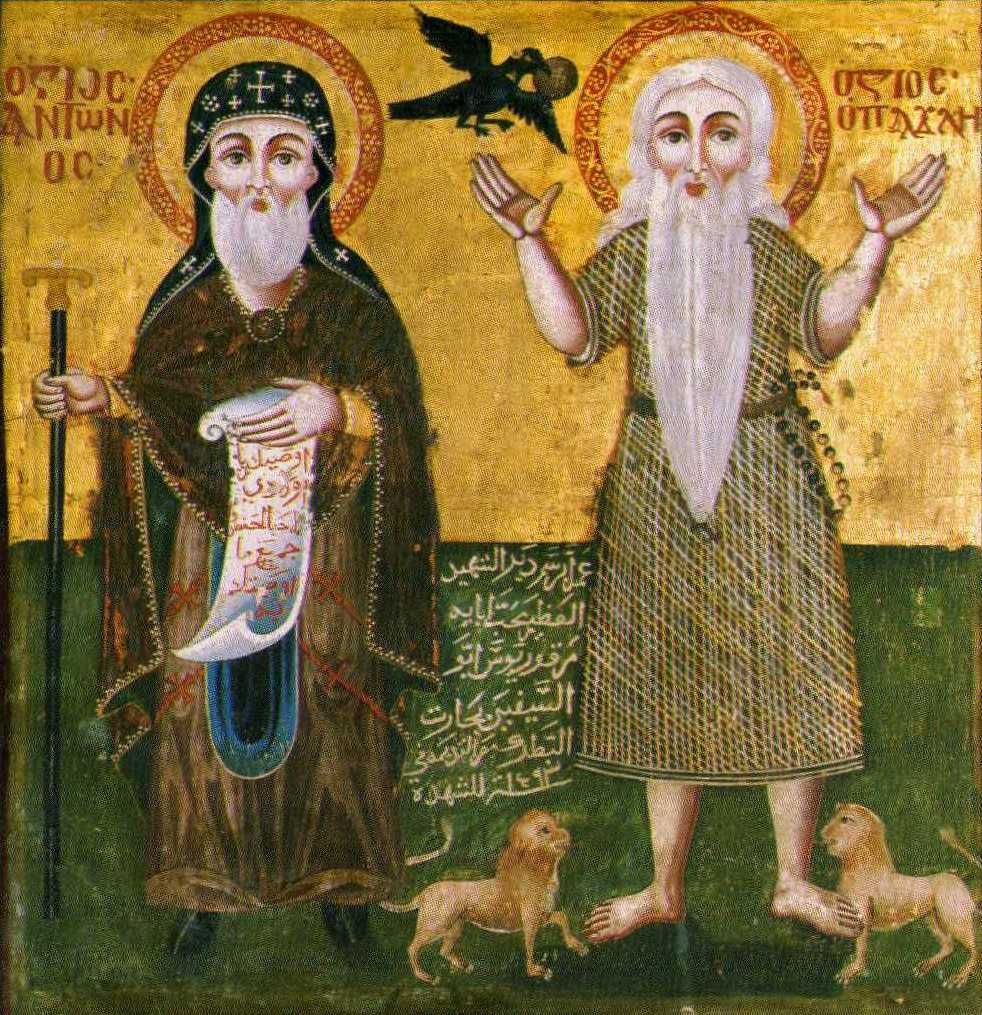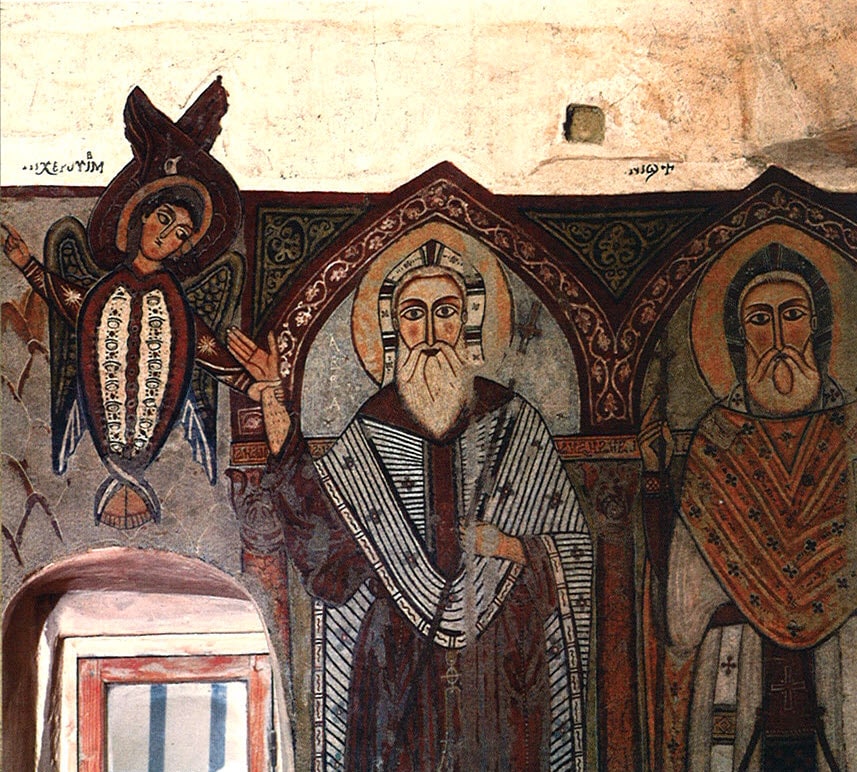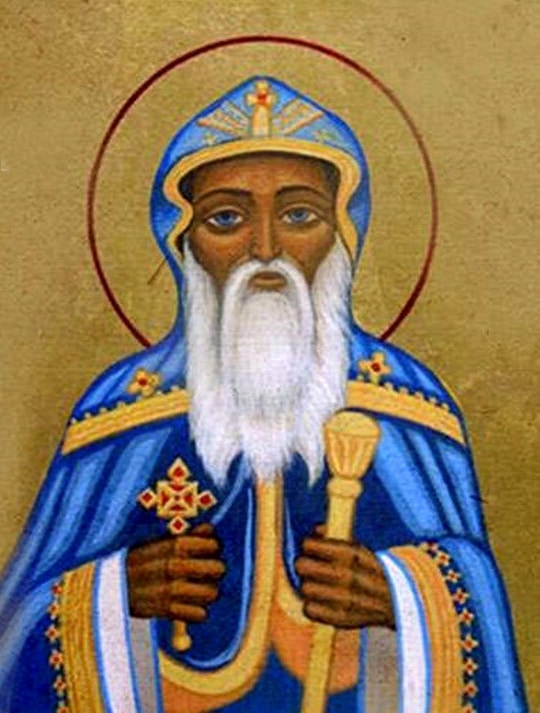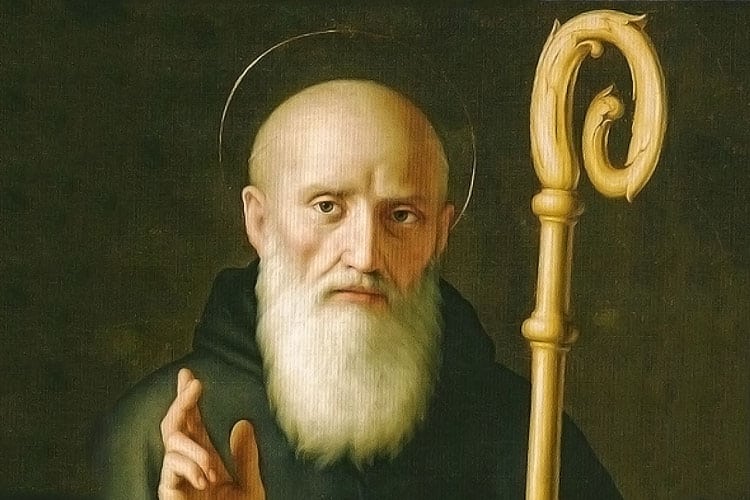Overview
In the Western collective imagination, especially European, the idea of monk is generally linked to Franciscan friars with their brown coat and white cord. In fact, Franciscan are not monks and monasticism itself is much older than the great Saint Francis of Assisi (1181-1226). Monasticism’s cradle is in Egypt. It can be said, that undoubtedly, one of the most important gifts of the Egyptian Church to the Christian world is monasticism.
In the same years in which the foundations of the Church of Alexandria were laid, the Alexandrian Jewish philosopher Philo described in his “The Contemplative Life” a Jewish community of ascetics. These ascetics, called the “Therapeutae,” who Eusebius of Caesarea considered Judeo-Christian, lived around the lake Mareotis (in Arabic Maryūṭ), near Alexandria, in asceticism and chastity, practicing constant meditation of the Scriptures. In reality, examples of proto-monasticism are already present in the Old Testament (just think of the figure of Elijah, for instance) and in the New (for instance John the Baptist). Remaining in the field of the New Testament, some elements that would become distinctive signs of monastic life are already present in the early Christian community. We know, for example, of the existence of Christian communities of people living in virginity (cf. 1 Cor. 7:25-28; Acts 21:9) that were inspired by the words of the Lord Jesus on being eunuchs (cf. Mt. 19: 10-12). The sub-apostolic patristic literature abounds in references to communities of “chaste” or “virgin” people living in poverty and asceticism.[1]
Perhaps a century before the one who is considered the founder of Christian monasticism, St. Anthony the Great (251-356), there existed in Alexandria an environment, such as the Catechetical School of Alexandria, the Didaskaleion, led by Origen, where the master lived in a community with the disciples with whom Scriptures were studied and deepened in an atmosphere of prayer and asceticism.
St. Athanasius’ biography itself shows that forms of proto-monastic hermitage existed in his time. St. Athanasius writes in the biography of Abba Anthony that he tried at the beginning to be taught by men who already practiced the life of solitude outside the town.[2] One of these hermits prior to Anthony is even known by name, St. Paul of Thebes (234-347), thanks to St. Jerome’s work, “Life of St. Paul.” Known as the “anchorite,” he is much revered by Copts. He was a member of a wealthy and educated family who fled very young in the desert during the persecution of Decius (201-251).
However, it is undeniable that the first to have given precise features to monasticism, attracting around him a large number of disciples, was certainly St. Anthony, and a little later, St. Pachomius and St. Macarius the Great, despite in different forms.
Three main forms of monasticism
In Egypt, three forms of monasticism developed simultaneously. First, the anchoretic monasticism or hermitism, who took St. Anthony the Great (250-356) as a model; second, the semi-anchoretic monasticism which developed around the figure of St. Macarius the Great (300-390); and lastly, the coenobitic monasticism which had St. Pachomius (287-347) as a father. The fundamental vocation that united these three forms of monasticism was to radically follow Christ at the margins of society and in the deserts by practicing continuous prayer and work and living in non-possession and chastity. What differentiated them were the organizational forms, the rhythm of daily life and the different importance accorded to community and solitude.

Anchoretism
The Greek term anchoretism derives from the Greek word ἀναχωρεῖν, properly “retire,” while the synonymous term hermitism has the Greek etymology ἔρημος, that is “desert,” which at the beginning literally designated the place where this “retirement” took place. The most important form that characterizes the anchoretism is a more or less total solitude of the monk who radically lives his vocation: to be one with God. In Greek, in fact, μοναχός means “one,” “alone,” “solitary.”
The model of this type of monasticism is undoubtedly represented by the extraordinary figure of St. Anthony the Great. Born in 250 in Koma (today Qiman al-‘Arūs), a Coptic village of Middle Egypt, from a wealthy Christian family. One day when he was almost twenty years old, he heard in church the word that the Lord addressed to the rich young man, “If you want to be perfect, go, sell what you have and give to the poor, and you will have treasure in heaven; and come, follow Me” (Matt. 19:21). Perceiving that this word was addressed directly to him, he obeyed. At first, he practiced a life of penance and prayer at home, then, he entrusted his sister to the virgins and followed the example of other ascetics of his time. He withdrew, at the edge of the city, then in a grave not far from his native village. Here, he lived up to 35 years. Finally, disturbed by the ever-increasing number of people who were attracted to him by his fame to ask him for prayers, advice and healings, he moved further into the Eastern Egyptian desert. There he found a Roman fort abandoned near Pispir (currently Dayr al-Maymūn), a few kilometers north-east of Banī Suwayf, where he stayed to fight his spiritual struggle for about twenty years (ca. 285-305). His first disciples began to gather around him. Desiring to live in greater solitude, St. Anthony went even further, retiring to a cave at the foot of Mount Qulzum, in Wādī al-‘Arab , not far from the Red Sea, near the place where now stands the Monastery of St. Anthony the Great (Dayr Anbā Anṭūniyūs al-Kabīr). Here, he lived, at first alone and then with some disciples, for fifty years, until his death, at the age of one hundred and five years, on January 17, 356. Today the Coptic Church celebrates his feast on January 30, due to the days difference between the Julian and Gregorian calendars.
 Semi-Anchoritism
Semi-Anchoritism
The semi-anchoritic or lauritic form (from the Greek word laura) is characterized by a community of “solitary” who live isolated from the world, praying and devoting themselves to manual work all week inside of cells or caves in desert. Unlike the anchorites or hermits semi-anchoritic monks gather in a central church, called “Catholic,” for the Sunday night liturgy and then in a refectory for the common meal that followed it (agape). The semi-anchoritic form was particularly widespread in the north of Egypt in three areas: Nitria, Kellia and the desert of Scetis, today called Wādī al-Naṭrūn. Currently, the only area where monasticism is still alive is Scetis. The great historical monasteries of Scetis were five and of these there only remains four, which are all linked to the figure of Abba Macarius or that of his disciples. Probably the oldest settlement in which St. Macarius settled is Dayr al-Baramūs that means “Monastery of the Romans.” Its name refers to the two Roman young sons of the emperor Valentinian I (321-375), Maximus and Dometius, who became disciples of St. Macarius the Great and lived in a cell in this area. The community at al-Baramūs was founded around 340. The other monastic center which will later be known as Dayr Anbā Maqār al-Kabīr, “Monastery of St. Macarius the Great”, was founded around 360 by St. Macarius who spent most of his life and died at that location. It is also known by the popular name of Dayr Abū Maqār. Dayr Anbā Bīšōī takes its name from the holy Desert Father Pīšōī, who lived in Scetis until 407. Dayr al-Suryān, “Monastery of the Syrians” is dedicated to the Virgin Mary. Its name refers to the fact that, for almost a millennium (from the 8th to the 17th century), it was owned and run by Syriac monks. About fifteen kilometers southwest of Dayr Anbā Maqār stand the ruins of the fifth ancient monastery, Dayr Anbā Yaḥnis al-Qaṣīr, dedicated to the Desert saint John Kolobós (“the Little”) whose relics currently rest in the Monastery of St. Macarius. This latter monastery, made in wood, collapsed in the 15th century following a termites’ invasion.
 Coenobitism
Coenobitism
The coenobitic form (from κοινός “common” and βίος “life”) owes its creation to St. Pachomius, called by tradition the “father of koinonia.” He founded numerous communities whose monks shared a large part of each day and established for them the first monastic “rule” that regulated every aspect of common life, from the subdivision of structures to community activities. The first monastery he founded was at Tabennisi, in the Thebaid region (Southern Egypt), around the year 320.
Born in the Thebaid region to pagan parents around 287, Pachomius became acquainted with Christianity in 312, during his military service in the Roman army. Locked up in a barracks in Thebes together with his companions, he was profoundly edified by the gesture of charity of some Christians who lovingly took care of them. He thus promised that if he were to be freed from the sad condition in which he found himself, he would serve the God of Christians all his life, loving all men. Released from prison and discharged from the army, Pachomius did not return home but stopped in the village of Sheneset (today’s Qaṣr al-Sayyid), in Upper Egypt, where he spent three years practicing asceticism. Here, on the Easter night of 313, he received baptism. Eager to practice evangelical radicalism, Pachomius became a disciple of the monk Palamon, an anchorite who lived near the village, living in obedience with him for four years.
It is during this time that he felt the need to build a monastery. Pachomius thus settled in the village of Tabennisi, near Dandara, on the east bank of the Nile, where many disciples soon gathered around him, attracted by his fame. Here he founded the first cenobitic monastery around 320. Other communities followed. At his death, on May 9, 347 (May 22, according to the Gregorian calendar), ten monasteries were running that were directly or indirectly founded by him and inhabited by thousands of monks. In the region of Tabennisi also three convents for nuns were built.
 Irradiation of Egyptian Monasticism in the World
Irradiation of Egyptian Monasticism in the World
Egyptian monasticism quickly spread to all regions of the Roman Empire. This is mainly due to some saints who, after spending a period in Egyptian monasteries and being initiated to monasticism, returned to their countries of origin telling, in many works, what they had seen in Egypt and planting in those regions the monasticism they had experienced. This means that, at the beginning, Egyptian monasticism was extremely cosmopolitan. Among these extraordinary characters, real spiritual bridges who cooperated in the spread of Egyptian monasticism, we remember, in the East: Hilarion of Gaza (291-371), Epiphanius of Salamis (ca. 310-403), Eugene of Clysma (†363), Ephrem the Syrian (306-373), Basil the Great (330-379), Evagrius Ponticus (345-399), John Climacus (ca. 575-650).
The person who certainly contributed to the spread of Egyptian monasticism in the West was St. Athanasius the Great who spent almost nine years in Europe. One of his masterpieces, Life of Anthony, was penned following a request made by some Western ascetics to know more deeply the life of the Desert saint whose fame began to spread everywhere. St. Athanasius came into contact with the Western Church during his exile in Trier (336-337)―currently at the border between Germany and Luxembourg―where he was warmly welcomed by the bishop of the city, Maximinus. Then, it was the turn of the exile in Rome, in the years between 339 and 345. In Rome St. Athanasius was accompanied by some monks, including Isidorus who had welcomed Palladius in Alexandria.[3] With the stays of Athanasius in the West, the reputation of St. Anthony and that of Egyptian monasticism rapidly spread in Rome, Gaul, Spain, and in the North Africa.[4] Among the European saints who were profoundly influenced by Egyptian monasticism were: John Cassian (360-435), Martin of Tours (ca. 316-397), Palladius (363-420), Jerome (342-420), Rufinus (ca. 345-411), Benedict of Nursia (480-550), Dionysius Exiguus (ca. 470-545). It is worth remembering here that St. Augustine (354-430) was deeply touched by the figure of St. Anthony the Great to the extent that his conversion to Christianity began with a passage from Life of Anthony, “the father of monks.”[5]
***


